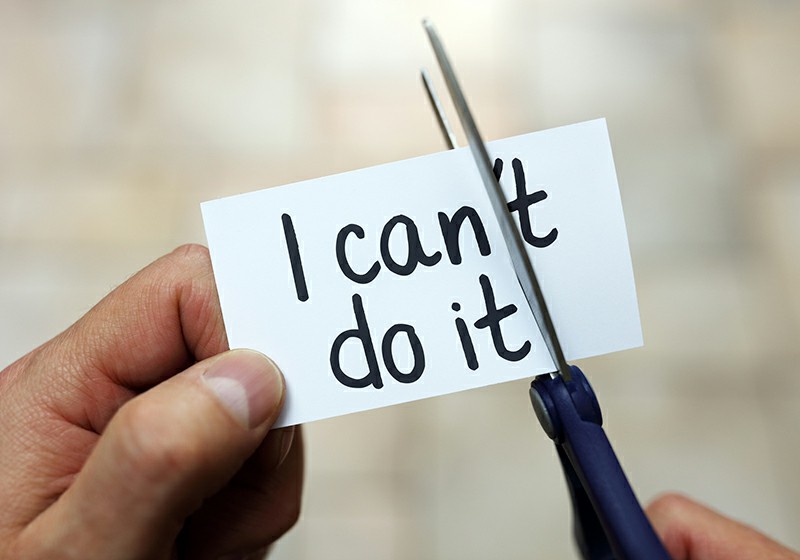Before we start, let’s getting something straight.
I love self-help as much as you do. I wouldn’t have a career if I didn’t believe in self-help. I am the original Mr. “you are the master of your own fate”. And I’m a teacher by nature and profession (all writers are), so I obviously believe we can improve our lives with a combination of information, persistence and motivation.
That said, there are an awful lot of platitudes in the self-help world that everyone repeats like they’re revealed gospel, but which, really people, they’re not.
Not even close.
Here’s my list of the top 7 contenders. Remember, like “carbs are bad” or “trans fat is evil”, generalities often contain a germ of truth. But truth is in the details. It’s time to bust a few myths when it comes to what I call “poster platitudes”—sayings that look good on a motivational poster in the office, but need a little clarification in order to be useful.
The idea behind this is that if you’re conscientious in one area you will be conscientious in another. If you’re a “shortcut taker” in your work you may be a “shortcut taker” in your diet. Or in your relationship.
Boy, do I wish this one were true. My teachers (notably Werner Erhard and T. Harv Eker) have said it often, and honestly, for a while I said it often. Problem is I’ve known plenty of people who were fastidious and organized in several areas of their life and completely out of control in others (like their diet). Some people are risk takers in business and extremely cautious in relationships. I like the idea of practicing a trait—like conscientiousness or integrity—and hoping it will crossover to every area of your life. Unfortunately, it just doesn’t always work that way.
No. It doesn’t. If by “reason” you mean everything is preordained and designed, and you were “meant” to be in this relationship or in this city or in this job, then, sorry, I don’t buy it. What I do buy is that you can take any situation and find something ultimately valuable in it, but that’s you making up the reason after the event has happened.
For example, when I got divorced I thought it was the end of the world. Now, 15 years later, I see that it wasn’t. But that’s because getting divorced turned out well for me. That doesn’t mean there was some pre-ordained “reason” my ex-wife and myself parted ways. It just means I was lucky enough to turn what was then a big fat sour lemon into a pretty amazing sugarless lemon chiffon cake.
This is another platitude that contains a grain of truth. There’s a lot to seeing a result in your mind’s eye; it causes you to be more aware of daily decisions that could actually create that result. (I visualize “safety” every time I get behind the wheel of my car, but not because I think that visualization has any magical power—I just want to increase my consciousness of safety so I make safer driving decisions.)
Where the platitude goes south is when we think we have to visualize something in order for it to actually happen. People sometimes, unexpectedly, and with absolutely no thought, stumble into incredible good luck, sometimes deserved and sometimes not-so-deserved. Drew Carey was working as a parking attendant in Vegas and the biggest thing he visualized for himself was a studio apartment and his own (used) vehicle. Life has a way of surprising us.
I certainly understand the sentiment behind this one. Every other week there’s an inspiring movie about someone who surmounted unbelievable odds because he wouldn’t accept other people’s definitions of him. I’m all for that.
But the fact is, we do have limits. You can’t spend 90 hours a week trying to make partner in a law firm and still have 20 hours a week to work on your music career while trying to keep a family together. “Having it all” was a big aspirational marketing myth, the main result of which was to make women who weren’t Superman feel somehow deficient. There’s lots of peace and serenity in accepting certain limits. There’s even more in making choices and being happy with them.
No one I know—including myself—likes the idea of stomping on someone’s dreams. The “go for your dreams” stuff is almost built into our DNA. But the fact is, sometimes your dreams shouldn’t be pursued—or should be pursued in a different way.
If you’re 5’2”, going for your dreams of playing with the Lakers is probably not going to work out. But maybe that dream can morph into something that is achievable, and will still get you a lot of what you wanted in the first place. I once knew a dancer who came to New York with the dream of being a member of the Alvin Ailey dance company. Wasn’t going to happen. But once she accepted that, she went on to became one of the best-known Pilates teachers in the world. Sometimes we have to be bigger than our dreams, which aren’t always the best guide to what we should do.
You can’t. I can’t be a professional tennis player, you probably can’t be the next draft pick for the Pittsburg Steelers, my beloved Michelle can’t be First Lady, and the homeless guy on my corner can’t be the Governor of Alabama. And few of us can win a Rhodes Scholarship or wrestle in the Olympics, no matter how hard we try and how motivated we are.
When I was a professional musician back in the 80’s and 90’s in New York, I knew a very famous orchestrator. In fact, by many accounts, he was the greatest orchestrator in the world. But he was miserable. Why? Because he wanted to be a great composer, and he wasn’t. Nor could he be. He just wasn’t very good at it.
Remember the serenity prayer? I’ll paraphrase it : Let me change what I can and accept what I can’t. Accepting that you can’t be anything you want to be certainly doesn’t mean you have to be nothing.
If I have one mission to achieve on this planet it’s to bust this destructive ugly myth into so many pieces that they explode into another galaxy. So listen up.
Sexiness comes from within. There are a zillion ways to be beautiful and attractive. Beauty comes in all shapes and sizes. The nose you think is too big might drive somebody else crazy with desire. The weight you think you have to lose to be lovable might be the heaviness of the thoughts in your head rather than the love handles on your hips. Remember that the sexiest place in your body is between your ears. The more you chase after some cookie-cutter template for “beauty” the less attractive you become. The more you embrace, own, and love who you are, the hotter you are.
As Allen Stone says…
I ain’t no angel, but I ain’t so bad
And the best part of learning is just loving where you’re at.














Leave A Comment